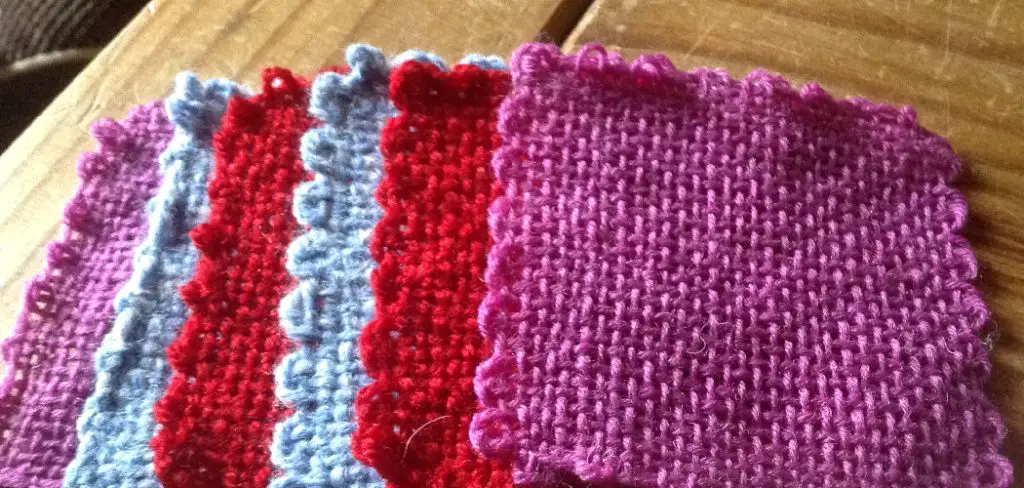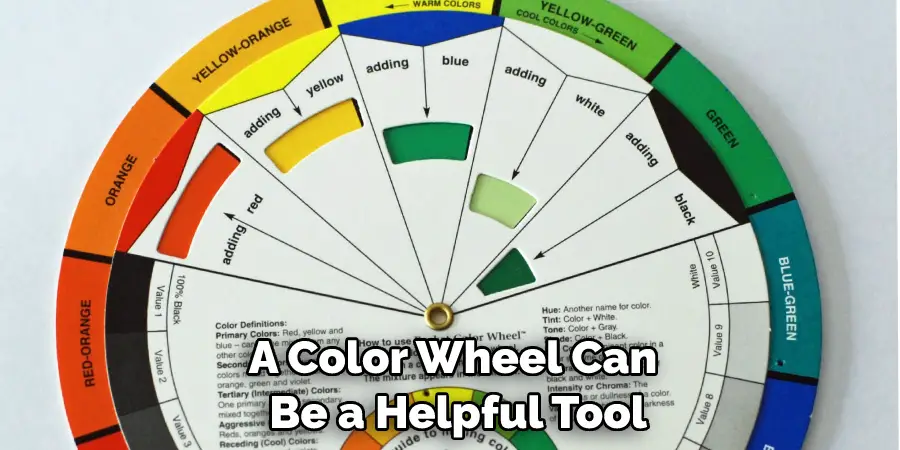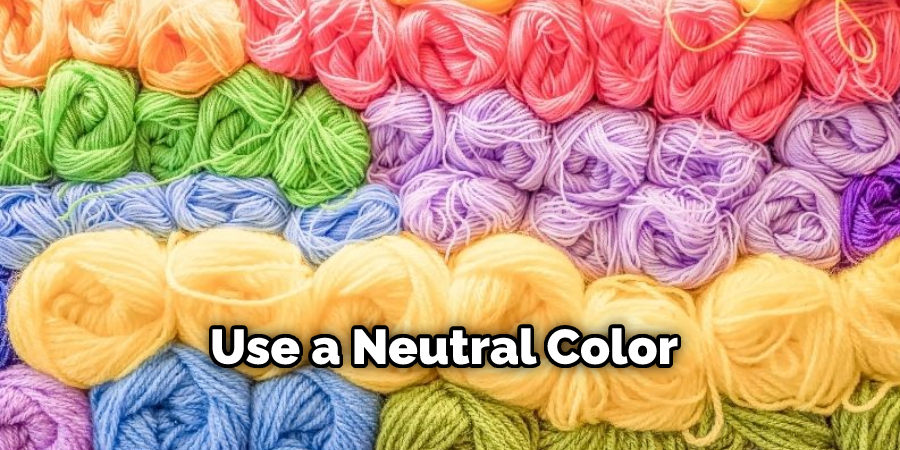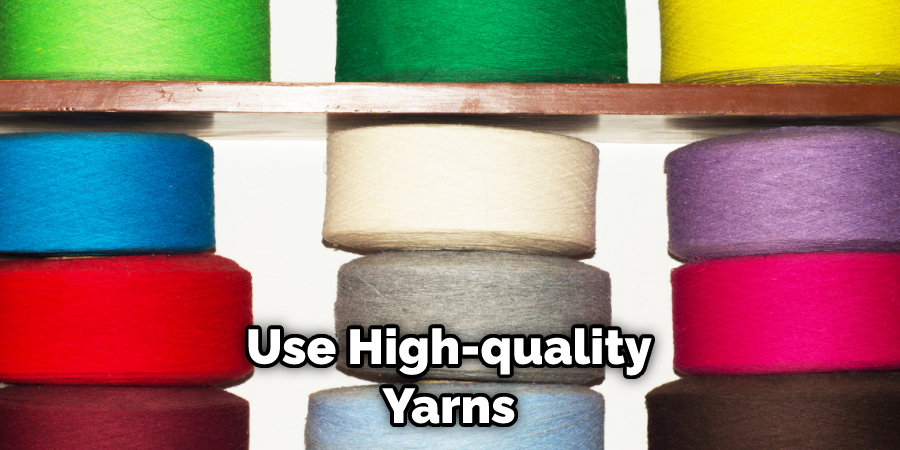Do you love doing beautiful crochet projects but find changing colors a little bit challenging? You’re not alone! Every crocheter at one point has had some difficulty transitioning from one color to the next. However, with the right knowledge and technique, it doesn’t have to be an intimidating task.

In this blog post, we’ll be talking all about how to seamlessly change colors in crochet so that your work looks professional and polished. With a few tips and tricks up your sleeve, you can easily transform your project into just what you envisioned it would be – without having any visible breaks or holes associated with color changes. So read on if you want to learn more about how changing colors is really not as difficult as it may seem!
How Do You Crochet an Invisible Finish?
The final step in seamlessly changing colors in crochet is making the transition invisible. This can be done by crocheting over the yarn tail when you finish off your stitch and begin a new one with a different color.
To do this, work the last loop of the old color until there are two loops left on the hook. Then, thread the yarn tail (the end of the strand of yarn that is not attached to the ball) through these remaining loops and pull tight.
This will secure the yarn tail without having it show from either side of your project. You can then continue with your new color as normal, working around both strands until you reach where you begin switching colors.
If you are carrying multiple colors across a row or round, you can also use the same method to join them. Before starting a new color, yarn over with both colors before inserting your hook into the stitch and completing the stitch as normal. This will help keep all of your colors secure and allow for better tension control.
By following these steps, you’ll be able to change colors without any visible seams or gaps in your crochet project. With practice, this technique makes changing colors in crochet easier than ever!
10 Methods on How to Seamlessly Change Colors in Crochet
1. Choose a Complementary Color Scheme
When choosing colors for your project, it is important to select a color scheme that will be complementary. A complementary color scheme is one in which the colors are opposite each other on the color wheel. This type of color scheme is often used in interior design and can create a very striking effect.
For example, if you are using two colors that are complementary, you might choose a light blue and a dark purple. This type of color scheme will provide contrast and visual interest to your project. Although you can use any type of color scheme, it is important to select colors that will work well together.

2. Use a Color Wheel
A color wheel can be a helpful tool when trying to choose colors that will work well together. The color wheel is a circle that is divided into different sections, with each section representing a different color. By looking at the color wheel, you can see which colors are opposite each other and which ones are next to each other.
This can help you to create a color scheme that is both harmonious and visually appealing. You can also use the color wheel to create a gradual transition from one color to another. For example, if you want to transition from red to blue, you can choose colors from each side of the color wheel, such as red-orange and blue-violet. This will create a smooth, gradual transition.
3. Consider the Mood You Want to Create
Another thing to consider when choosing colors is the mood you want to create with your project. Different colors can evoke different emotions, so it is important to select colors that will create the mood you are going for.
For example, if you want to create a calm and relaxing mood, you might choose softer colors such as blues and greens. If you want to create a more energetic and exciting mood, you might choose brighter colors such as reds and oranges. Once you have selected the colors that will create the mood you’re looking for, it’s time to start changing those colors in your project.
4. Use Colors from the Same Family
If you are having trouble finding two colors that work well together, you might try choosing colors from the same family. For example, if you want to use two shades of blue, you might choose navy blue and sky blue.
Or, if you want to use two shades of green, you might choose forest green and mint green. Using colors from the same family can help to create a more cohesive look. You can also combine colors from different color families, such as blues and pinks or yellows and grays. Just make sure the colors don’t clash or look too stark against one another.

5. Use Analogous Colors
Analogous colors are those that are next to each other on the color wheel. This type of color scheme can be very harmonious and visually pleasing. For example, if you want to use two analogous colors, you might choose yellow-green and green or red-orange and orange.
When changing colors in crochet, you can easily transition from one color to another by using the same stitch. For example, if you are working single crochet, you can start each row with the next color without having to fasten off and start a new strand. This will create a smooth transition from color to color.
6. Choose a Color That Is Neutral
If you want to use two colors, but one of them needs to be more subtle, you might choose a neutral color such as white, gray, or black. This type of color can help create a balanced look and can draw attention to the brighter color that it is paired with.
Be sure to use a neutral color that is not too close in the shade to the other colors you are using, as this can make it difficult to see the difference. And if you are using multiple colors, be sure to choose a neutral color that will work with all of the other colors in the project. That way, all of the colors will be able to blend together seamlessly.

7. Use Contrasting Colors
Contrasting colors are those that are opposite each other on the color wheel. This type of color scheme can create a very bold and eye-catching effect. For example, if you want to use two contrasting colors, you might choose red and green or blue and orange. If you use this color scheme, be sure to pay attention to the amount of contrast between your colors.
Too much contrast can make it difficult to distinguish between colors. If you are using contrasting colors in a larger project, try alternating two similar colors to make it easier for the eye to distinguish between them.
8. Choose Colors That Have Different Values
When choosing colors for your project, another thing to consider is the value of each color. Value refers to how light or dark a color is, and it can be used to create contrast. For example, if you want to use two colors with different values, you might choose a pale pink and a deep purple. This will create an interesting contrast that can help give your project a unique look.
You can also use colors with similar values, such as two shades of blue, to create a more subtle look. By carefully selecting colors with different values, you can create a piece that looks vibrant and professional.
9. Use Complementary Colors for Contrast
As mentioned above, complementary colors are those that are opposite each other on the color wheel. This type of color scheme can be very effective when trying to create contrast between two colors. For example, if you want to use two colors with contrasting values, you might choose black and white or yellow and purple.
When used in a pattern, complementary colors can give structure to the piece. They also create an interesting visual effect and add depth to your work. With this technique, it’s important to use the colors in a balanced way so that the contrast doesn’t become too stark or overwhelming.
10. Experiment!
The best way to figure out which colors work well together is simply by experimenting. Try out different combinations of colors and see what looks best to you! Start with a small project like a granny square or an easy scarf pattern.
Make sure to use high-quality yarns so the color will stay vibrant over time. Play around with stripes, ombre gradients, two-tone effects, and more until you find the perfect combination that makes you happy. After all, the beauty of crochet is that it’s unique to anyone who creates it!

Conclusion
So take courage and pick up your needle—you’ve got this! And don’t forget, these same tips apply to other forms of smocking too – just check out the variety of tutorials available online for even more inspiration on how to mesh two colors together perfectly!
Get creative and show how masterfully you can blend multiple colors into one gorgeous garment – or home decor item using how to seamlessly change colors in crochet as your guide.


